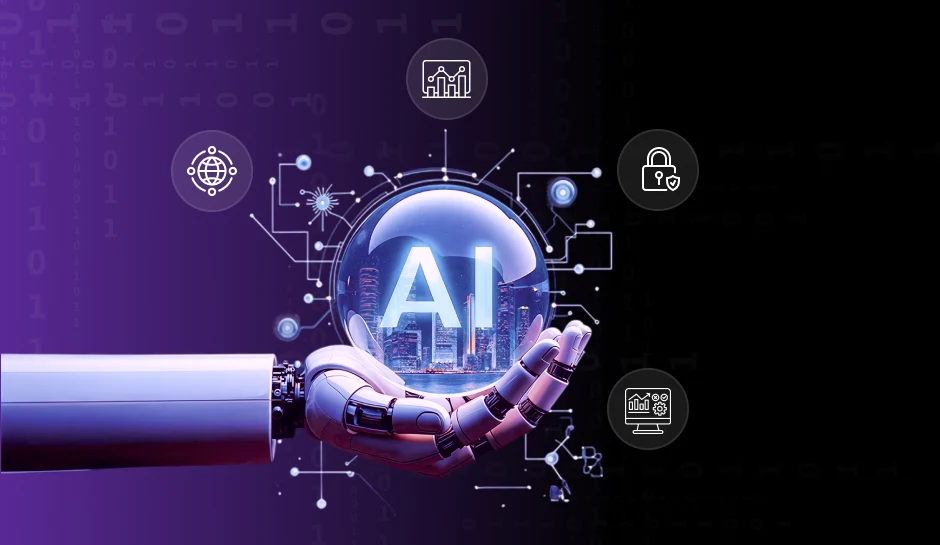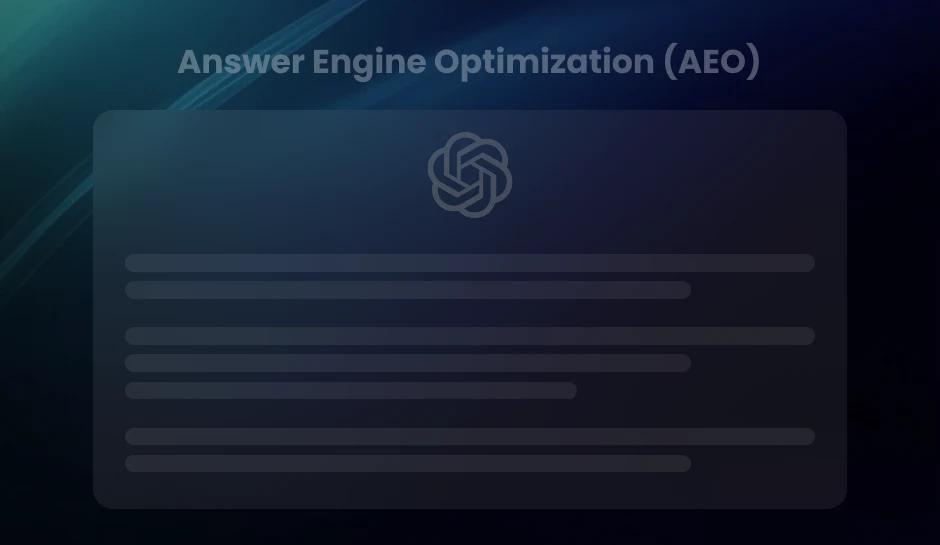
Automated Data Analysis for Marketing: Unlocking Insights with Big Data
Harness the power of big data and AI-driven automation to refine your marketing strategies. Learn how machine learning enhances audience segmentation, campaign performance, and real-time decision-making for improved engagement and ROI.
Businesses generate massive volumes of data every day. Customer interactions, social media activity, website traffic, and purchasing patterns contribute to a growing reservoir of information. Extracting value from these vast datasets requires more than traditional analytics. Big Data technologies capture, store, and process information unprecedentedly, revealing patterns that manual analysis would miss.
Automation transforms how companies handle this complexity. Machine learning algorithms and AI-driven models sift through massive datasets, identify trends, and generate actionable insights in real-time. This automation accelerates decision-making and eliminates human bias, leading to more precise marketing strategies.
Big Data analytics redefines marketing by uncovering patterns in consumer behavior, optimizing campaign performance, and enhancing customer experience. Predictive analytics refine targeting, while sentiment analysis gauges brand perception. Leveraging these insights equips businesses with the ability to craft data-driven strategies that maximize engagement and conversion rates.
Embracing Machine Learning Algorithms for Marketing Success
An Overview of Machine Learning (ML) Algorithms
Machine learning algorithms transform marketing strategies by identifying patterns, predicting outcomes, and automating data-driven decisions. These algorithms fall into three primary categories:
- Supervised Learning: Uses labeled datasets to train models, making it effective for classification and regression tasks. Algorithms like Decision Trees and Support Vector Machines (SVM) fall under this category.
- Unsupervised Learning: Analyzes unlabeled data to discover hidden patterns. Clustering techniques such as K-Means and Hierarchical Clustering help marketers segment audiences based on common characteristics.
- Reinforcement Learning: Enables models to optimize decisions through trial and error. Applications in marketing include dynamic pricing and personalized recommendations.
Each approach serves a distinct function, allowing businesses to automate complex marketing processes and extract actionable insights.
Automating Predictive Decision-Making with ML
Machine learning revolutionizes marketing by turning historical data into predictive power. Predictive models anticipate customer behavior, optimize ad spending, and enhance lead scoring. For example, regression models forecast sales trends based on advertising expenditure, while classification models assess customer churn probability.
Natural Language Processing (NLP) further refines marketing automation by analyzing customer interactions, such as reviews and social media conversations. Sentiment analysis applies NLP to detect positive, neutral, or negative feedback, helping brands adjust messaging accordingly.
Automated predictive systems also drive real-time decision-making. Self-learning algorithms update dynamically with new data, ensuring marketing campaigns remain adaptive to shifting consumer behaviors. These systems continuously refine targeting strategies, maximizing return on investment (ROI).
Examples of ML Algorithms in Marketing and Audience Insights
- Decision Trees: Classify customers based on purchasing behavior, enabling precise audience targeting. These models visualize decision paths, making them useful for understanding customer preferences.
- Random Forest: Improves accuracy by combining multiple decision trees. Marketers use it to evaluate customer lifetime value (CLV) and identify loyalty drivers.
- K-Means Clustering: Segments customers into groups with shared traits, optimizing personalized marketing efforts. E-commerce platforms apply this technique to differentiate high-value shoppers from occasional buyers.
- Neural Networks: Power recommendation engines by identifying subtle patterns in user behavior. Streaming services and e-commerce sites deploy them to predict content or product preferences.
- Gradient Boosting Machines (GBM): Excel in ranking and scoring tasks, making them ideal for lead scoring models in B2B marketing.
Key Marketing Metrics and KPIs to Track through Automation
Identifying Critical Marketing Metrics and KPIs
- Customer Acquisition Cost (CAC): Sum of marketing and sales expenses divided by new customers acquired within a given period.
- Customer Lifetime Value (CLV): Projected revenue from a customer throughout their relationship with the company.
- Conversion Rate: Percentage of users completing a desired action, such as a purchase or sign-up.
- Return on Investment (ROI): Marketing-generated revenue minus costs, providing a direct profitability measure.
- Click-Through Rate (CTR): Ratio of users clicking an ad or link versus total views, indicating content effectiveness.
- Engagement Metrics: Metrics like social media interactions, time on page, and email open rates show how audiences respond to content.
- Churn Rate: Percentage of customers discontinuing service in a period, signaling retention and loyalty performance.
How Automation Tools Track and Report on These Metrics
Marketing automation platforms integrate with analytics tools to extract, process, and visualize data in real-time. These systems monitor KPI changes and alert teams to trends requiring immediate action.
- Real-Time Dashboards: Aggregated data from multiple sources provides up-to-the-minute performance insights.
- Machine Learning Algorithms: Pattern-recognition models identify anomalies, predict converting audience segments, and optimize strategy dynamically.
- Automated Reporting: Scheduled performance reports reduce manual workload, ensuring consistent data-driven decision-making.
- Attribution Modeling: AI-driven multi-touch attribution assigns value to each customer touchpoint, optimizing marketing spend allocation.
Utilizing KPIs for Improved Decision-Making
Data-backed marketing decisions improve campaign performance, customer retention, and overall profitability. Automated tracking models highlight underperforming areas, allowing teams to adjust strategies dynamically.
- Budget Allocation: KPI analysis directs marketing spend toward high-performing channels, improving ROI.
- Campaign Optimization: A/B testing insights refine targeting, messaging, and ad placements for better conversions.
- Customer Journey Mapping: Behavioral data enables personalized engagement across multiple touchpoints.
- Predictive Modeling: Sales forecasts and churn risk identification enable proactive business adjustments.
Enhancing Customer Segmentation with Automated Analysis
The Concept of Customer Segmentation for Targeted Marketing
Customer segmentation divides a market into distinct groups that share common characteristics. These segments can be defined by demographics, behaviors, purchase history, or even psychographics. Effective segmentation sharpens marketing strategies, enabling highly personalized interactions. Instead of generic mass messaging, brands can engage customers with precision-driven content and offers.
Traditional segmentation relies on manual data analysis, often leading to inefficiencies and oversimplified groups. Automating this process eliminates limitations by processing vast datasets in real-time, and identifying nuanced patterns that human analysts might overlook.
Leveraging Automation to Efficiently Segment Customers
Automated data analysis enables businesses to segment audiences more accurately and at scale. Machine learning algorithms analyze customer behaviors, interactions, and transactional history to detect meaningful correlations. These segments continuously evolve as new data streams in, keeping marketing efforts dynamic and aligned with changing consumer trends.
- Demographic Segmentation: Automatically categorizes customers based on age, gender, income level, and geographic location.
- Behavioral Segmentation: Analyzes browsing habits, purchase frequency, and engagement levels to group customers with similar behaviors.
- Psychographic Segmentation: Uses AI-driven analysis of preferences, interests, and values to create deeper audience profiles.
- Predictive Segmentation: Identifies potential high-value customers by examining historical data and forecasting future buying behaviors.
Brands using automation for segmentation can deploy real-time adjustments in advertising campaigns, ensuring that marketing efforts always target the most relevant audience with the most effective message.
Tailoring Marketing Efforts to Segmented Groups for Better Results
Once customers are accurately segmented, marketing teams can craft personalized experiences that drive higher conversion rates. Automated data analysis refines audience targeting, optimizing content, email marketing, and ad placements.
- Dynamic Content Personalization: Marketing platforms use AI to tailor website content and promotional materials based on segmentation data.
- Email Campaign Optimization: Automated customer segments enable hyper-personalized email campaigns, improving open and conversion rates.
- Programmatic Advertising: AI-driven audience segmentation ensures ads reach the ideal customer at the right moment.
- Customer Journey Optimization: Automated triggers adjust messaging and product recommendations in response to real-time user behavior.
Businesses that implement automated segmentation experience increased customer retention and higher ROI on marketing campaigns. Advanced analytics transform raw data into actionable insights, allowing brands to engage audiences with precision and relevance.
Pro Tip- Leverage AI-driven predictive segmentation to identify high-value customers early, enabling hyper-personalized marketing that maximizes engagement and conversions.
Boosting Engagement with AI-Powered Recommendation Systems
The Role of AI in Personalized Recommendations
AI-driven recommendation systems analyze vast amounts of data to deliver highly personalized content, product suggestions, and marketing messages. These systems apply machine learning algorithms to user behavior, demographic data, and interaction history, tailoring recommendations with precision. Companies like Amazon, Netflix, and Spotify use such systems to drive engagement and retention by predicting what users will find most valuable.
Using collaborative filtering, content-based filtering, and deep learning models like neural networks, AI refines recommendations over time. Collaborative filtering clusters users with similar preferences, while content-based filtering examines item attributes. More advanced deep learning techniques analyze contextual relationships, improving accuracy further.
The Process of Integrating AI Recommendation Systems in Marketing
Implementing AI-powered recommendations in marketing involves data collection, model training, and deployment. First, structured and unstructured customer data from CRM platforms, purchase histories, and browsing behavior feed into machine learning models. Data preprocessing ensures input consistency, filtering out noise while retaining meaningful patterns.
Once prepared, an AI model, often using deep learning architectures like recurrent neural networks (RNNs) or transformers, processes the data. These models continuously update through reinforcement learning, adapting as user preferences shift. Integration into marketing channels-email campaigns, websites, e-commerce platforms, and social media-ensures seamless real-time recommendations.
APIs from AI service providers like Google Cloud AI, AWS Personalize, and Azure Machine Learning streamline deployment. These platforms allow marketers to scale recommendation systems without requiring in-depth machine learning expertise.
Assessing the Impact of Automated Recommendations on User Engagement
AI-powered recommendation systems significantly influence engagement metrics, including click-through rates (CTR), conversion rates, and average session duration. Personalized recommendations boost CTR by as much as 30-50%, increasing the likelihood of customer interaction. Amazon attributes 35% of its revenue to AI-powered recommendations, illustrating their commercial impact.
Behavioral data indicates that users often engage more with tailored content. Netflix reports that 80% of watched content comes from algorithmic suggestions, underscoring the role of AI in retention. By analyzing A/B testing results, marketers can measure the precise effect of recommendations on different user segments, optimizing engagement strategies further.
Beyond website interactions, AI-driven personalization extends to email campaigns. Dynamic content suggestions based on recipient behavior improve email open rates and click-through performance. Leading marketing automation tools like HubSpot, Marketo, and Salesforce Einstein integrate AI to refine content personalization dynamically.
Analyzing customer journeys with AI also enhances long-term engagement by predicting evolving preferences. Real-time recommendation adjustments ensure relevance, keeping users engaged across various touchpoints.
Pro Tip- Continuously refine AI recommendation models with real-time user data to enhance personalization, boost engagement, and drive higher conversion rates.
The Agility of Real-Time Data Processing in Marketing
The Need for Real-Time Data in the Fast-Paced Marketing World
Markets shift rapidly, consumer behaviors evolve, and competitors adjust their strategies in real-time. Static data reports generated days or weeks after interactions fail to capture these constant fluctuations. Real-time data processing provides immediate insights, allowing marketing teams to react instantly to emerging trends, sudden spikes in user engagement, or declining campaign performance.
Traditional reporting methods rely on batch processing, where data is collected and analyzed in periodic cycles. This delay prevents businesses from capitalizing on fleeting marketing opportunities. In contrast, real-time data streaming ensures immediate access to user interactions, facilitating on-the-fly optimizations and precise audience targeting.
How Automation Enables Real-Time Data Analysis and Reporting
Automated data analysis integrates machine learning models, AI-powered analytics tools, and cloud-based infrastructure to process vast datasets instantly. This eliminates the need for manual intervention and removes the bottleneck of human-led reporting cycles.
- Event-driven processing: Automated systems collect and analyze data from digital touchpoints as interactions happen, enabling real-time updates on campaign performance.
- AI-powered anomaly detection: Machine learning algorithms detect deviations in user behavior, campaign engagement, or conversion rates, triggering automatic adjustments in marketing strategies.
- Automated reporting dashboards: Marketers access live data visualizations that update dynamically, eliminating the reliance on retrospective static reports.
- API integrations: Connected marketing platforms share real-time insights across CRM systems, advertising platforms, and email automation tools, creating a seamless flow of actionable data.
These mechanisms ensure that data is not just collected but also structured, analyzed, and visualized without delays, improving responsiveness to demand fluctuations, campaign issues, and consumer behaviors.
Leveraging Real-Time Insights for Immediate Marketing Action
Statistics lose value if they remain unused. Real-time analytics influences marketing decisions at every stage, from ad placements to content optimization. Marketers adjust bidding strategies on programmatic advertising platforms in response to shifting audience engagement. Social media teams modify campaigns based on live sentiment analysis, ensuring that brand messaging aligns with audience expectations.
- Ad campaign optimization: Automated bidding strategies adjust in real-time based on ad performance metrics, reducing wasted ad spend and maximizing conversions.
- Dynamic website personalization: AI-driven web content adapts based on user behavior, tailoring offers, product recommendations, and promotional messages instantaneously.
- Live customer engagement: Chatbots and automated messaging systems respond to real-time user queries, improving customer experience and reducing response lag.
- Instant competitive analysis: Automated tools monitor competitor pricing, promotions, and content strategies, allowing brands to respond proactively.
By integrating real-time automation into their marketing workflows, businesses move beyond reactive decision-making and deploy proactive strategies that align with market changes the moment they occur.
Pro Tip- Harness AI-powered real-time analytics to detect trends instantly and adjust marketing strategies on the fly, ensuring maximum engagement and ROI..
Conversion Rate Optimization (CRO) via Automated Analysis
Understanding the Role of CRO in Marketing
Conversion Rate Optimization (CRO) directly affects return on investment by maximizing the percentage of users who take a desired action. Whether it’s completing a purchase, signing up for a service, or engaging with content, CRO eliminates inefficiencies in the customer journey. Marketers leverage data-driven CRO strategies to refine calls to action, optimize landing pages, and streamline user experiences.
Employing Automated Analysis Tools to Enhance Conversion Rates
Automated analysis tools process vast datasets to pinpoint factors influencing conversion rates. With machine learning models, businesses detect user behavior patterns and segment audiences dynamically. Tools such as Google Analytics 4, Amplitude, and Mixpanel provide real-time insights, allowing continuous performance adjustments based on visitor interactions.
- User Journey Mapping: AI-driven tools track visitor interactions, identifying friction points that hinder conversions.
- Heatmaps and Session Recordings: Automated platforms like Hotjar and Crazy Egg visualize user interactions and highlight areas requiring improvement.
- Predictive Analytics: Algorithms assess past interaction data to forecast user behaviors and recommend optimizations.
A/B Testing and Other Automation-Supported Strategies
A/B testing, or split testing, validates CRO strategies by comparing different variations of webpages, emails, or ad creatives. Automated testing platforms like Optimizely and VWO enable rapid experimentation, reducing guesswork in decision-making.
- Dynamic Content Adaptation: AI personalizes site elements based on user behavior, improving engagement and conversion potential.
- Automated Experimentation: Algorithms determine winning variations, adjusting campaigns in real-time to maximize performance.
- Micro conversion Tracking: ML-driven systems track smaller interactions, such as button clicks or form fills, to refine marketing funnels.
By integrating automation into CRO workflows, marketers continuously refine conversion paths, ensuring sustained growth and increased efficiency.
Pro Tip- Leverage AI-driven A/B testing to automate optimization decisions, ensuring that every element of your marketing funnel maximizes conversions in real-time.
Personalization and Targeted Marketing in the Age of Automation
The Growing Expectation for Personalized Marketing
Consumers now expect brands to deliver highly personalized experiences. Generic advertisements fail to capture attention, while tailored content drives engagement and conversion. According to a 2023 McKinsey report, 71% of consumers anticipate personalized interactions and 76% express frustration when they do not receive them.
Personalization extends beyond addressing a customer by name. Dynamic content, product recommendations, and customized offers based on user behavior define modern marketing strategies. Automated data analysis enables marketers to leverage vast datasets to predict preferences and deliver relevant content at scale.
Automation’s Role in Targeted Marketing Efforts
Automated data analysis processes vast amounts of consumer information and identifies patterns, preferences, and behaviors. This capability allows marketers to segment audiences dynamically and tailor their messaging with precision.
- Behavioral Targeting: AI-driven systems analyze customers’ browsing history, purchase behavior, and engagement levels to deliver relevant ads and recommendations.
- Predictive Personalization: Algorithms anticipate user needs before they explicitly express them, increasing engagement and retention.
- Programmatic Advertising: Automated platforms utilize real-time bidding (RTB) and machine learning models to place ads where they will yield the highest return.
- Email Marketing Optimization: Personalized subject lines, content, and product suggestions based on previous interactions improve open and conversion rates.
Netflix and Amazon exemplify this approach. Their recommendation engines analyze user behavior in real-time, ensuring every customer sees content or products tailored to their preferences.
Strategies for Implementing Automated Personalization
- Data Integration: Consolidating data from multiple touchpoints-website interactions, app usage, and customer service contacts-creates a comprehensive user profile.
- AI-Driven Segmentation: Clustering algorithms divide customers into micro-segments based on behavioral and demographic data.
- Dynamic Content Personalization: AI-generated content adapts in real-time based on user interactions, ensuring relevance across email campaigns, landing pages, and product pages.
- A/B Testing at Scale: Machine learning automates A/B testing, analyzing results across large datasets to determine the most effective personalization strategies.
- Omnichannel Consistency: AI-driven personalization ensures seamless experiences across web, mobile, email, and social media platforms.
Predicting Customer Lifetime Value (CLV) with Automated Models
Understanding CLV and Its Role in Marketing ROI
Customer Lifetime Value (CLV) quantifies the total revenue a business can expect from a customer throughout their relationship. This metric guides strategic decisions, ensuring resources focus on high-value customers. Companies using CLV insights allocate budgets efficiently, optimize retention strategies, and improve acquisition tactics.
Traditional methods for CLV estimation relied on historical data and basic projections. These approaches struggled with accuracy, failing to account for dynamic customer behaviors. Automated models now provide precise, data-driven CLV predictions by processing vast datasets and identifying intricate spending patterns.
Automated Predictive Models for CLV Estimation
Advanced algorithms use machine learning to forecast CLV with greater accuracy than traditional models. These models leverage behavioral, transactional, and demographic data to detect key purchase patterns.
- Regression Models: Linear and logistic regression analyze historical spending habits and project future revenue.
- Machine Learning Algorithms: Random forests, gradient boosting machines, and neural networks refine predictions by considering nonlinear relationships.
- Time-Series Analysis: Sequence-based methods track purchasing frequency and value over specific time frames.
- Clustering & Segmentation: Grouping customers based on shared characteristics enhances personalized CLV predictions.
By automating these processes, businesses eliminate manual calculations and human bias, enhancing prediction reliability.
Integrating CLV Insights into Strategic Marketing Planning
Predictive CLV models directly influence customer acquisition, retention, and monetization strategies. Applying these insights, companies can:
- Optimize Marketing Spend: Allocate budgets to acquire high-value customers rather than attracting unprofitable segments.
- Enhance Personalization: Tailor offers and messaging based on predicted long-term value to maximize conversion rates.
- Improve Retention Efforts: Identify at-risk customers with declining CLV and implement targeted engagement strategies.
- Fine-Tune Pricing Strategies: Adjust pricing and discounting models to align with expected customer value.
- Streamline Resource Allocation: Distribute operational and marketing efforts to maximize returns from high-lifetime-value customers.
Pro Tip- Use automated CLV predictions to segment customers dynamically, allowing for hyper-personalized marketing strategies that maximize long-term profitability.
The Definitive Shift Towards Automated Data Analysis in Marketing
Automated data analysis reshapes how businesses approach marketing, turning raw data into actionable insights with unparalleled speed and accuracy. Companies relying on manual processes struggle to keep pace with intensifying competition and consumer expectations. Automation eliminates bottlenecks, enhances decision-making, and empowers marketers to respond dynamically to changes in customer behavior.
The adoption of machine learning, predictive analytics, and AI-driven tools allows marketing teams to refine targeting, personalize campaigns, and maximize conversion rates. Automated models identify trends, forecast performance, and uncover patterns that human analysts might overlook. Businesses leveraging these capabilities gain a measurable advantage, optimizing budgets and increasing return on investment.
Real-time data processing, sentiment analysis, and AI-powered recommendations further push the boundaries of marketing efficiency. Automated attribution modeling clarifies campaign impact, while customer segmentation benefits from precise, algorithmic adjustments. Every touchpoint in the consumer journey becomes an opportunity to refine strategies and enhance engagement.
Key Takeaways
- Machine learning and AI-driven models analyze vast datasets in real-time, uncovering patterns and trends that improve marketing precision, optimize campaign performance, and enhance customer targeting.
- Automated segmentation and predictive analytics allow businesses to personalize content, refine customer experiences, and deliver hyper-targeted marketing campaigns, increasing engagement and conversion rates.
- Automated analytics and AI-driven tools provide instant insights, allowing businesses to adapt to shifting consumer behaviors, optimize ad spend, and refine strategies without delays.
- AI-powered A/B testing, heatmaps, and predictive modeling streamline CRO efforts by identifying bottlenecks in user journeys, enabling dynamic content adaptation, and maximizing return on investment (ROI).
Explore automated data analysis for marketing to optimize your data-driven strategies.
Adopt advanced analytics tools to enhance marketing efficiency and maximize ROI. Email us at info@diggrowth.com to schedule a demo or trial with leading solutions to see automation in action.
Ready to get started?
Increase your marketing ROI by 30% with custom dashboards & reports that present a clear picture of marketing effectiveness
Start Free Trial
Experience Premium Marketing Analytics At Budget-Friendly Pricing.

Learn how you can accurately measure return on marketing investment.
Additional Resources
Don’t Let AI Break Your Brand: What Every CMO Should Know
AI isn’t just another marketing tool. It’s changing...
Read full post postFrom Demos to Deployment: Why MCP Is the Foundation of Agentic AI
A quiet revolution is unfolding in AI. And...
Read full post postAnswer Engine Optimization (AEO): The New Frontier of SEO in 2025
As digital experiences continue to evolve, so does...
Read full post postFAQ's
Automated data analysis in marketing refers to the use of AI, machine learning, and analytics tools to process vast amounts of customer and market data in real-time. It helps businesses uncover trends, optimize marketing campaigns, and make data-driven decisions with minimal manual intervention.
Big data enables marketers to analyze customer behavior, track engagement metrics, segment audiences more precisely, and predict future trends. This leads to more personalized campaigns, higher conversion rates, and improved customer retention.
Machine learning algorithms analyze historical and real-time data to identify patterns, forecast customer behaviors, and automate marketing tasks such as lead scoring, dynamic pricing, and personalized recommendations, making marketing strategies more efficient and targeted.
Popular tools include DiGGrowth, Google Analytics 4 (web analytics), HubSpot (marketing automation), Tableau (data visualization), Amazon Personalize (AI-driven recommendations), Hotjar (heatmaps and user behavior tracking), and Optimizely (A/B testing).
Businesses can track key performance indicators (KPIs) such as customer acquisition cost (CAC), conversion rates, return on investment (ROI), customer lifetime value (CLV), and engagement metrics (click-through rates, bounce rates, etc.) to evaluate the success of automated data analysis in marketing campaigns.
 Arpit Srivastava
Arpit Srivastava  Rahul Sachdeva
Rahul Sachdeva 

